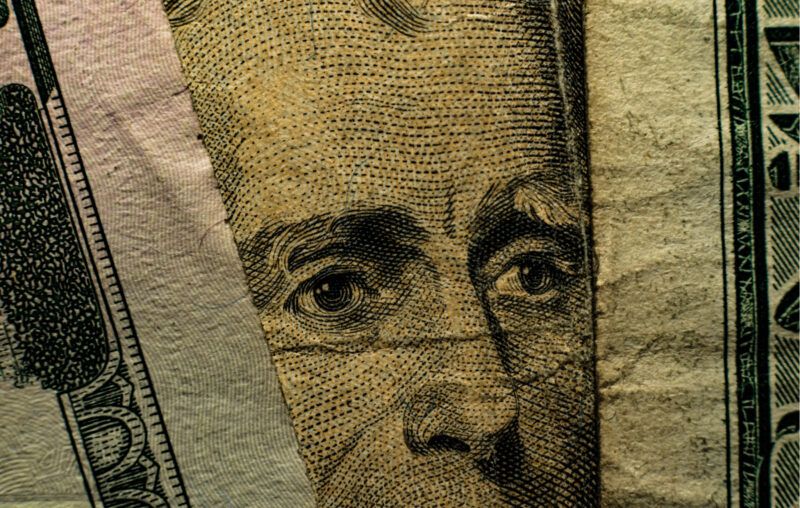Monetary Inflation’s Game of Hide-and-Seek

The May 12, 2021, press release from the Bureau of Labor Statistics reporting on the Consumer Price Index (CPI) for the month of April sent the stock markets tumbling for two days and generated fodder for the news pundits with the announcement that the CPI measure of the cost-of-living had increased 4.2 percent at an annualized rate, or nearly 62 percent higher than in March when the annualized rate was 2.6 percent. The era of relatively low rate of price inflation was feared to be ending.
For almost a decade, despite significant increases in the money supply, CPI-measured price inflation remained “tame.” Between March 2011 and March 2021, the M-2 money supply (cash, checking accounts, and small savings) went from $8.94 trillion to $19.9 trillion, or a 222.5 percent increase. Just in 2020, M-2 expanded by nearly 25 percent.
Yet, despite this, the CPI only went up by a little less than 20 percent, from 223 to 266.8 (100 = 1982-1984) between 2011 and 2021. The annual rates of CPI price inflation for this ten-year period were mostly less than 2 percent. What is called “core” price inflation – the CPI minus energy and food prices – averaged each one of these ten years a bit higher most of the time, but not by much in this period. (See my article, “Dangerous Monetary Manipulations and Fiscal Follies”.)
But what, exactly, does the Consumer Price Index tell us? All price indexes, including the CPI, are statistical constructions created by economists and statisticians that, in fact, have very little to do with the actions and decisions of consumers and producers in the everyday affairs of market demand and supply. And they are certainly not accurate and precise guides for central bank monetary policy.
Overall versus “Core” Price Inflation
The government’s CPI statisticians distinguish between two numbers: the change in the overall CPI, which as we saw, increased at an annualized rate of about 4.2 percent in April and “core” price inflation, which is the rate of change in the CPI minus food and energy prices, rose 3.0 percent in April.
The government statisticians make this distinction because they argue that food and energy prices are more “volatile” than many others. Fluctuating more frequently and to a greater degree than most other commonly purchased goods and services, they can create a distorted view, it is said, about the magnitude of price inflation during any period.
The problem is that food and energy costs may seem like irritating extraneous “noise” to the government number crunchers. But to most of the rest of us, what we must pay to heat our homes and put gas in our cars, as well as buying groceries to feed our families, is far from being a bothersome distraction from the statistical problem of calculating price inflation’s impact on our everyday lives.
Constructing the Consumer Price Index
How do the government statisticians construct the CPI? The Bureau of Labor Statistics (BLS) surveys the purchases of 6,000 households across the country, which is taken to be “representative” of the approximately 333 million people living in the United States. The statisticians then construct a representative “basket” of goods reflecting the relative amounts of various consumer items these 6,000 households regularly purchase based on their buying patterns. The BLS monthly records changes in the prices of these goods in 22,000 retail outlets out of the estimated 4.2 million retail establishments across the whole country.
This is, then, taken to be a fair and reasonable estimate – to the decimal point! – about the cost of living and the rate of price inflation for all the people of the United States.
Due to the costs of doing detailed consumer surveys and the desire to have an unchanging benchmark for comparison, this consumer basket of goods is only significantly revised about every ten years or so. This means that over the intervening time it is assumed that consumers continue to buy the same goods and in the same relative amounts, even though in the real world new goods come on the market, other older goods are no longer sold, the quality of many goods are improved as the years go by, and changes in relative prices often result in people modifying their relative buying patterns. In addition, people, sometimes, just change their preferences and decide to buy different things, in different relative quantities.
The CPI vs. the Diversity of Real People’s Choices
It also needs to be emphasized that there is no “average” American family. The individuals in each household (moms and dads, sons and daughters, and sometimes grandparents or aunts and uncles) all have their own unique tastes and preferences. This means that your household basket of goods is different in various ways from mine, and our respective baskets are different from everyone else’s.
Some of us are avid book readers, and others just relax in front of the television. There are those who spend money regularly going (at least in pre-Covid times) to live sports events, others go out every weekend to the movies and dinner, while some stay more at home and save their money for exotic vacations or for their children’s college education.
A sizable minority of Americans are still cigarette smokers (about 15 percent), while others are devoted to health foods and herbal remedies. Some of us are lucky to be “fit-as-a-fiddle,” while others, unfortunately, may have chronic illnesses. Tastes, circumstances, and buying patterns are as diverse as the 333 million people who live in the United States.
Looking Inside the Consumer Price Index
This means that when there is price inflation (or deflation) those rising (or falling) prices impact on each of us in different ways. Let’s look at a somewhat more detailed breakdown of some of the different price categories hidden beneath the CPI aggregate of prices.
In the twelve-month period ending in April 2021, food prices, as a whole, in the CPI rose 2.4 percent, still a “moderate” price environment for food shopping, some might say. In fact, some food prices rose more over the past 12-month period, according to the BLS. Fruits and vegetables increased 3.3 percent for the year. But when we break this subcategory aggregate down, we find that fresh fruit prices rose by 6.2 percent, while fresh vegetable prices only increased by 0.9 percent. However, when we further break down the fresh vegetable category, potato prices decreased over the 12 months by 2 percent, while the price of a head of lettuce increased by 5.1 percent; dried peas, beans, lentils prices went up by 6.1 percent over the year.
Fresh whole milk was up by 4.4 percent for the 12 months, while cheese products declined in price by 0.3 percent. Meats rose on average by 4 percent, but uncooked beef steaks rose 6.1 percent, while bacon increased by 10.7 percent. However, chicken prices in general were down 0.1 percent for the period, while egg prices fell by 8.9 percent.
Far more dramatically, energy commodities in general rose by 47.9 percent between April of 2020 and April of 2021. Unleaded gasoline at the pump was, actually, up by almost 52 percent, while electricity prices rose by only 3.6 percent. On the other hand, utility gas prices increased by 12.1 percent.
Among household items, window coverings were down 9.4 percent, but living room, kitchen and dining room home furniture was up 9 percent, with major home appliances higher by 12.3 percent and laundry equipment 23.6 percent more expensive over the 12-month period. On the other hand, dishes and flatware decreased in price by 0.9 percent.
Men’s suits were down in price by 7.4 percent, but men’s pants and shorts rose in price by 10.4 percent. Jewelry and watches increased by 9.5 percent, while women’s apparel declined in price by 0.5 percent.
The cost of a new motor vehicle only was up in expense by 2 percent for the 12 months, while prices for used cars and trucks increased by 21 percent. Car and truck rental prices dramatically rose by a whopping 82.2 percent! On the other hand, medical equipment and supplies decreased by 5.5 percent, with medicinal drugs going down in price by 1.5 percent.
Smoke and Mirrors of “Core” Inflation
These subcategories of individual price changes highlight the smoke and mirrors of the government statisticians’ distinction between overall and “core” inflation. We all occasionally enter the market and purchase a new stove or a new couch or a new bedroom set, or a new or used car. And if the prices for these goods happen to be going down or up, we may sense that our dollar is going or not going further than, perhaps, in the past when we made similar purchases.
But buying goods like these is an infrequent event for virtually all of us. On the other hand, every one of us, every day, week, or month are in the marketplace buying food for our family, filling our car with gas, and paying the heating and electricity bill. The prices of these goods and other regularly purchased commodities and services, in the types and combinations that we as individuals and separate households choose to buy, are what we personally experience as a change in the cost-of-living and our personal rate of price inflation (or price deflation). Even if the BLS views these food and energy prices as extraneous “noise” in tracking trend changes in price inflation.
Individual Prices Influence Choices, Not the CPI
The Consumer Price Index is an artificial statistical creation from an arithmetic adding, summing and averaging of thousands of individual prices, a statistical composite that only exists in the statistician’s calculations.
It is the individual goods in the subcategories of these goods that we, the buying public, confront and pay for when we shop as individuals in the marketplace. It is the individual prices for the tens of thousands of actual goods and services we find and decide between when we enter the retail places of business in our daily lives. And these monetary expenses determine for each of us, as individuals and particular households, the discovered change in the cost-of-living and the degree of price inflation (or deflation) that we personally may experience.
The vegetarian who is single and without children, and never buys any types of meat, has a very different type of consumer basket of goods than the married couple who have meat on the table every night and shop regularly for clothes and shoes for themselves and their growing kids.
The individual or couple who have moved into a new home for which they have had to purchase a lot of new furniture and appliances will feel that their real (or buying power) income has gone down a noticeable bit over the past twelve months compared to the person who lives in a furnished apartment and has no need to buy a new chair or a dishwasher but eats beef or veal three times a week.
If the government were to impose a significant increase in the price of gasoline, say, in the name of “saving the planet” from carbon emissions, it will impact people very differently depending up whether an individual is a traveling salesman or a truck driver who might have to log thousands of miles a year as part of their job, compared to a New Yorker who takes the subway to work each day, or walks or bikes to his place of business.
It is the diversity of our individual consumer preferences, choices, and decisions about which goods and services to buy now and over time under constantly changing market conditions that determines how each of us are influenced by changes in prices, and therefore how and by what degree price inflation or price deflation may affect each of us.
As American economist, Benjamin Anderson, pointed out long ago,
“The general price level is, after all, merely a statistician’s tool of thought. Businessmen and bankers often look at index numbers as indicating price trends, but no businessman makes use of index numbers in his bookkeeping. His bookkeeping runs in terms of the particular prices and costs that his business is concerned with…. Satisfactory business conditions are dependent upon proper relations among groups of prices, not upon any average of prices.”
Indeed, as Austrian economist Gottfried Haberler long ago highlighted, “The relative position and change of different groups of prices are not revealed but are hidden and submerged in a general [price] index.” Yet, it is what is happening in the complex and interconnected structure of the relative prices for finished goods and the factors of production that influence and guide the market choices of consumers and the business investment and related decisions of entrepreneurs as to how best to direct production to serve the buying public in the pursuit of alternative profit opportunities.
Indeed, for many Americans in terms of their individual chosen baskets of goods during the previous 12 months based on the CPI price data, they might very well conclude they had been experiencing a period of moderate price inflation, while others could view themselves as having suffered from significantly higher price inflation.
Monetary Expansion Distorts Prices in Different Ways
An additional misunderstanding created by the obsessive focus on the Consumer Price Index and similar price aggregates is the deceptive impression that increases in the money supply due to central bank monetary expansion tend to bring about a uniform and near simultaneous rise in prices throughout the economy, encapsulated in that single monthly CPI number.
In fact, prices do not all tend to rise at the same time and by the same degree during a period of monetary expansion. Governments and their central banks do not randomly drop newly created money from helicopters, more or less proportionally increasing the amount of spending power in every citizen’s pocket at the same time.
Newly created money is “injected” into the economy at some one or few particular points reflecting into whose hands that new money goes first. In the past, governments might simply print up more banknotes to cover their wartime expenditures, and use the money to buy armaments, purchase other military supplies, and pay the salaries of their soldiers.
The new money would pass into the hands of those selling those armaments or military supplies or offering their services as warriors. These people would spend the new money on the goods and services they found desirable or profitable to buy, raising the demands and prices for a second group of prices in the economy. The money would now pass to another group of hands, people who in turn would now spend it on the market goods they wanted to demand.
Step-by-step, first some demands and some prices, and then other demands and prices, and then still other demands and prices would be pushed up in a particular time-sequential pattern reflecting who got the money next and spent it on specific goods, until finally more or less all prices of goods in the economy would be impacted and increased, but in a very uneven way over time.
But all these real and influencing changes on the patterns of market demands and relative prices during an monetary inflationary process are hidden from clear and obvious view when the government focuses the attention of the citizenry and its own policymakers on the superficial and simplistic Consumer Price Index and other similar statistical price aggregates. (See my articles, “Macro Aggregates Hide the Real Market Processes at Work” and “The Myth of Aggregate Demand and Supply”.)
Mises and Hayek on the Non-Neutrality of Money
This insight into the non-neutral impact of monetary changes on the patterns of market demand and the relative structure of prices and wages over time has been especially emphasized by the “Austrian” economists, particularly by Ludwig von Mises and Friedrich A. Hayek. For instance, Mises expressed it in the following way in Monetary Stabilization and Cyclical Policy (1928):
“If the quantity of money increases, the additional new quantity of money must necessarily flow, first of all, into the hands of certain definite individuals – gold producers, for example, or, in the case of paper money inflation, the coffers of the government. It changes only their incomes and fortunes at first, and consequently, only their value judgments [concerning desired cash balances to hold].
“Not all goods go up in price in the beginning, but only those goods demanded by the first beneficiaries of the inflation. Only later are prices of the remaining goods raised, as the increased quantity of money progresses step-by-step throughout the land and eventually reaches every participant in the economy.
“But even then, when the upheaval of prices due to the new quantity of money had ended, the prices of goods and services will not have increased to the same extent. Precisely because the price increases have not affected all commodities at the same time, shifts in the relationships in wealth and income are affected which affect the supply and demand of individual goods and services differently. Thus, these shifts must lead to a new orientation of the market and market prices.”
The same reasoning was highlighted by Hayek in a 1970 talk on, “Can We Still Avoid Inflation?”:
“The influx of the additional money into the system always takes place at some particular points. There will always be some people who have more money to spend before the others. Who these people are will depend on the particular manner in which the increase in the money stream is being brought about . . .
“It may be spent in the first instance by government on public works or increased salaries, or it may be first spent by investors mobilizing cash balances for borrowing for that purpose; it may be spent in the first instance on securities, or investment goods, on wages or on consumers’ goods . . .
“The process will take very different forms according to the initial source or sources of the additional money stream . . . But one thing all these different forms of the process will have in common: that the different prices will rise, not at the same time but in succession, and that so long as the process continues some prices will always be ahead of others and the whole structure of relative prices therefore will be very different from what the pure theorist describes as an equilibrium position.”
Money Creation and the Boom-Bust Cycle
Today, of course, virtually all governments and central banks inject new money into the economy through the banking system, making more loanable funds available to financial institutions to increase their lending ability to interested borrowers.
The new money first passes into the economy in the form of investment and other loans, with the effect of distorting the demands and prices for resources and labor used in capital projects that might not have been undertaken if not for the false investment signals the monetary expansion generates in the banking and financial sectors of the economy. This process sets in motion the sequence of events that eventually leads to the bust that follows the inflationary bubbles. (See my eBook, Monetary Central Planning and the State.)
Thus, the real distortions and imbalances that are the truly destabilizing effects from central banking inflationary monetary policies are hidden from the public’s view and understanding by heralding every month the conceptually shallow and mostly superficial Consumer Price Index. Whether the CPI records a higher or a lower rate of general price inflation, the more deleterious effects resulting from monetary inflation are those relative price and wage distortions, and resource, labor and capital misallocations and misdirection, that are hidden beneath the “surface” of the general price level, but nonetheless set in motion the phases and consequences of the business cycle.











